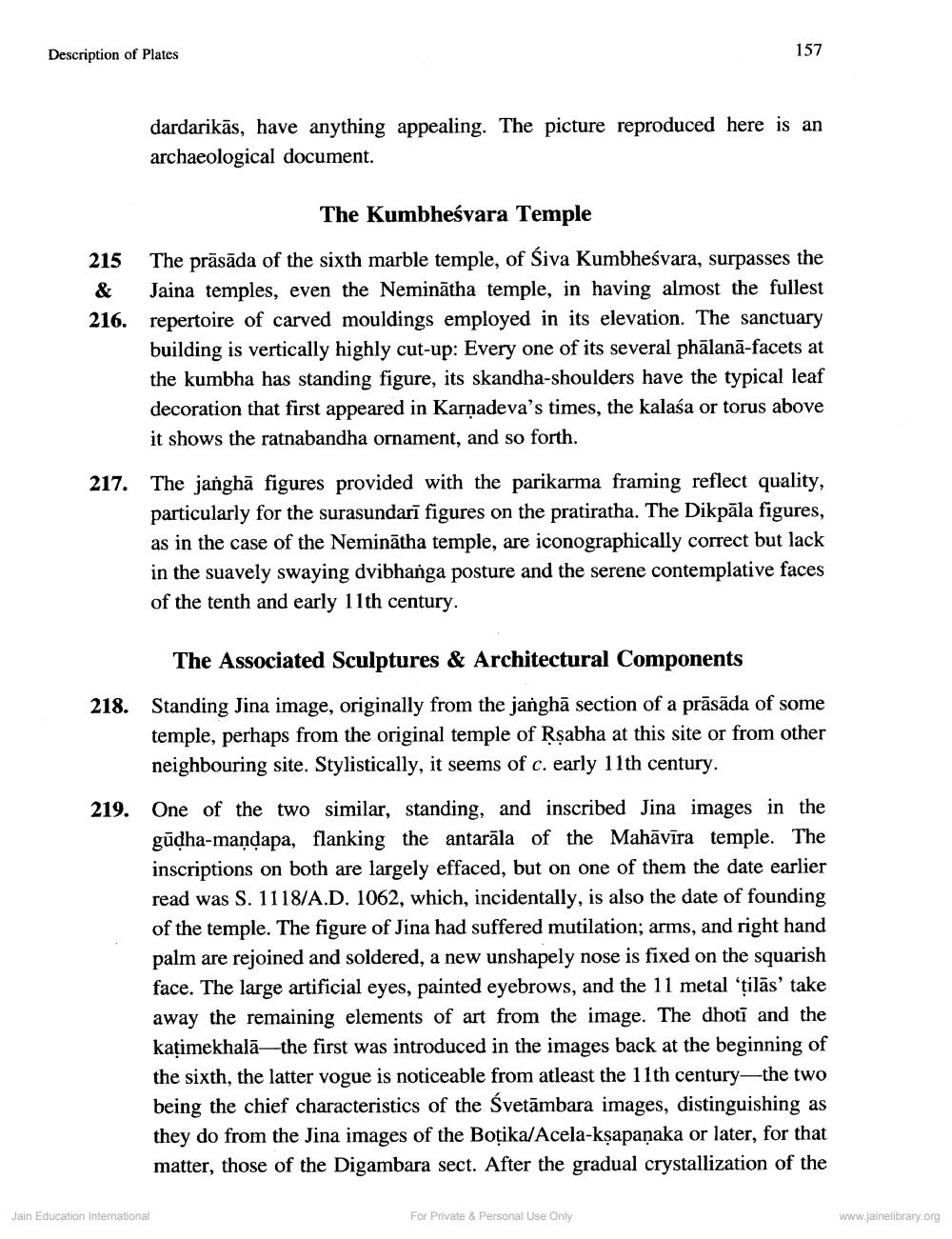________________
Description of Plates.
dardarikās, have anything appealing. The picture reproduced here is an archaeological document.
The Kumbheśvara Temple
215 The präsāda of the sixth marble temple, of Śiva Kumbheśvara, surpasses the & Jaina temples, even the Neminatha temple, in having almost the fullest 216. repertoire of carved mouldings employed in its elevation. The sanctuary building is vertically highly cut-up: Every one of its several phalana-facets at the kumbha has standing figure, its skandha-shoulders have the typical leaf decoration that first appeared in Karnadeva's times, the kalaśa or torus above it shows the ratnabandha ornament, and so forth.
157
217. The jangha figures provided with the parikarma framing reflect quality, particularly for the surasundari figures on the pratiratha. The Dikpäla figures, as in the case of the Neminatha temple, are iconographically correct but lack in the suavely swaying dvibhanga posture and the serene contemplative faces of the tenth and early 11th century.
219.
The Associated Sculptures & Architectural Components
218. Standing Jina image, originally from the jangha section of a prasada of some temple, perhaps from the original temple of Rṣabha at this site or from other neighbouring site. Stylistically, it seems of c. early 11th century.
One of the two similar, standing, and inscribed Jina images in the gūḍha-maṇḍapa, flanking the antarala of the Mahāvīra temple. The inscriptions on both are largely effaced, but on one of them the date earlier read was S. 1118/A.D. 1062, which, incidentally, is also the date of founding of the temple. The figure of Jina had suffered mutilation; arms, and right hand palm are rejoined and soldered, a new unshapely nose is fixed on the squarish face. The large artificial eyes, painted eyebrows, and the 11 metal 'țilās' take away the remaining elements of art from the image. The dhoti and the kațimekhala-the first was introduced in the images back at the beginning of the sixth, the latter vogue is noticeable from atleast the 11th century-the two being the chief characteristics of the Svetambara images, distinguishing as they do from the Jina images of the Botika/Acela-kṣapaṇaka or later, for that matter, those of the Digambara sect. After the gradual crystallization of the
Jain Education International
For Private & Personal Use Only
www.jainelibrary.org




